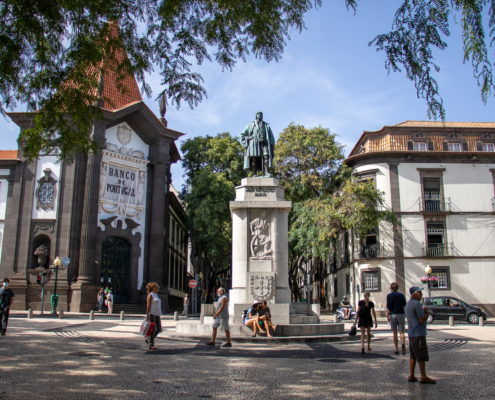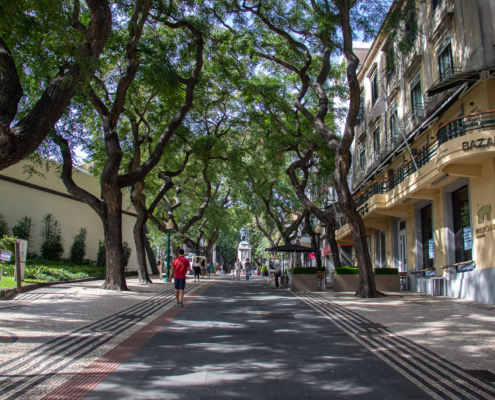Avenida Zarco
Linking Avenida do Mar e das Comunidades Madeirenses to Largo da Igrejinha, at the connection with Rua Câmara Pestana, Avenida Zarco owes its name to the discoverer of the island, João Gonçalves Zarco. This navigator even has a monument in his honour, in the area where this artery intersects with Avenida Arriaga, designed by the Madeiran sculptor Francisco Franco and inaugurated in 1930. It was also in that decade that the upper part of the avenue was opened, connecting the city quay to Rua Câmara Pestana, although the work proved to be a complicated task, due to the municipality’s financial difficulties.
It is on the south side of this avenue, where Zarco looks out to sea, that you will find the Palácio de São Lourenço, an imposing yellow building, part of which is the official residence of the Representative of the Republic for Madeira, while the other part is a military servitude, where the Army Headquarters is located. This building also houses the Military Museum, open to the public, where you can visit part of the region’s military collection.
Further north, near the João Gonçalves Zarco Monument, you will find one of the most emblematic 19th-century cafés in the cosmopolitan city. The history of the Golden Gate dates back to 1841.
It is a building with its esplanade on the corner of Avenida Arriaga and Avenida Zarco, which served as a support to a small hotel that existed at the entrance of the city. The café became a stopping point for tourists and residents and was once a meeting place for Funchal’s elite. The writer Ferreira de Castro called it “The Corner of the World” and the Golden Gate continues to live up to this phrase today because of the diversity of cultures it brings together.
The upper sector of the Avenida has, on the right, the headquarters of most of the Regional Government departments, the Salão Nobre being located there and not in Quinta Vigia, the seat of the executive.
To the left, crossing Avenida Arriaga is the magnificent building of Banco de Portugal, a work of the Estado Novo at the intersection with Avenida Arriaga







